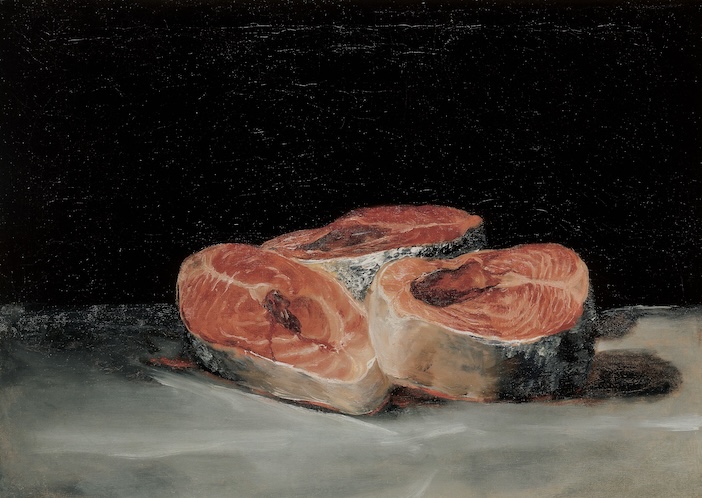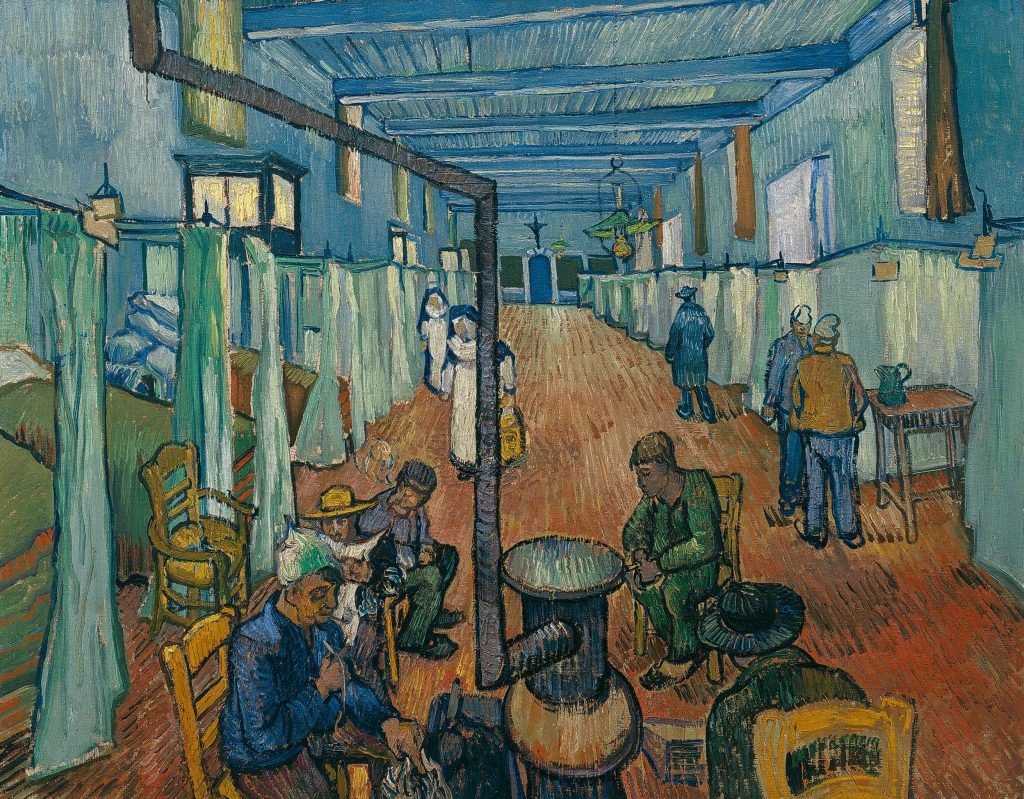At the Courtauld Gallery in London there is a rare opportunity to compare the collections of two far-sighted patrons of early twentieth century art, the Swiss collector Oskar Reinhart (1885-1965) and English art collector Samuel Courtauld (1876-1947). Only a few years separate their birth dates and their discernment for avant-garde art and artists, both creating their collections in the mid-1920’s. They did meet, in London in 1932.
For a few months, twenty-five artworks from the priceless Reinhart collection, normally housed in his former home ‘Am Römerholz’, in Wintherthur, Switzerland – currently undergoing refurbishment – are on loan to the Courtauld Gallery. The temporary exhibition ‘Goya to Impressionism: Masterpieces from the Oskar Reinhart Collection’ is exhibited in the top floor galleries, adjacent to Courtauld’s own collection of Impressionist and Post-Impressionist artworks in the Great Room. After viewing the Reinhart collection, an extra dimension would be to ‘compare and contrast’ Courtauld’s choice of acquisitions by Manet, Renoir, Monet, Cezanne, Picasso et al.

Edouard Manet, Au café, 1878
What is in the Reinhart show? Beginning with the Spanish painter Francisco Goya (1746-1828) whose name forms the exhibition title, Reinhart purchased Still Life with Three Salmon Steaks from a Paris dealer. Goya painted the fish slices on a dark background, strong light illuminating his subject. The work captures the exquisite essence of Spanish still-life paintings from Velasquez to Zurbaran to Goya, the subject painted in fine detail, and here the brushwork highlighting the raw pinkish-red flesh and freshness of the fish.
Between 1808 and 1812 Goya painted twelve non-commissioned still life works, including Still Life with…Golden Bream…Dead Turkey… a Piece of Rib, Loin of Mutton… and an eyeball-rolling Sheep’s Head. Here is the fish entrée. There is no connotation of a memento mori, however, historians often compare the horrendous mortality suffered during the Spanish-Napoleonic ‘Peninsula’ war, from 1807-14, which Goya lived through, to the carnivorous content of his still-life series.

Francisco Goya, Still Life with Three Salmon Steaks, 1808-12
Ultimately, this is a chance to see works never loaned for exhibition and as special as Claude Monet’s masterful The Break-up of Ice on the Seine. There are also three portraits and a landscape by Auguste Renoir, Monet’s painting companion. The works on display highlight Reinhart’s taste and preferences for the genres of landscape, portrait and still life but no Fauves and no Nabis, which he did not like. He did buy Theodore Gericault’s poignant A Man suffering from Delusions of Military Rank, The Hammock by Gustave Courbet and Girl Reading by Camille Corot, leading toward Reinhart’s choice of Impressionist and Post-Impressionist artworks. The Courtauld show also includes two paintings by Vincent van Gogh, A Ward in the Hospital at Arles and The Courtyard of the Hospital at Arles, plus six works by Paul Cezanne. In Still Life with Faience Jug and Fruit, for example, one can see how Cezanne influenced Henri Matisse’s decorative still life paintings.

Henri de Toulouse-Lautrec, The Clowness Cha-U-Kao, 1895
Reinhart purchased his first Impressionist painting, a now-lost work by Renoir, in Paris in 1912, from the art dealer Paul Durand-Ruel. It kick-started his Impressionist collection. The Courtauld exhibition includes major works of the Impressionist and post-Impressionist periods from the 1860s onwards. Édouard Manet’s Au café, from 1878, is a depiction of everyday life in the city of Baron Haussmann’s new, wide boulevards and many cafés in Paris. Its nightlife is also featured in Toulouse-Lautrec’s The Clowness Cha-U-Kao, showing typical Montmartre, where artists painted the gaiety and the poverty.
Cha-U-Kao would perform acrobatics and dancing – a mix of circus skills and cabaret – at the Moulin Rouge on Boulevard de Clichy, and the Nouveau Cirque on the Rue St Honoré. A famous, popular personality, her name was formed from the sound of the word ‘chaut’ for the can-can dance and ‘chaos’, denoting appreciative noises from the audience when she appeared on stage. Toulouse-Lautrec painted her during performances and backstage. In this masterpiece Reinhart acquired a visual reminder of a specific era of Parisian history during La Belle Époche.
Born into an affluent family, Reinhart’s career was mapped out by his father Theodor, who, in 1879, married Lilly Volkart and took over Volkart Brothers, Lilly’s family’s business. Trading in cotton and coffee when Theodor took it on, it expanded globally to include shipping and insurance acquisitions, directed from the company’s HQ in Winterthur. Oskar joined in 1904, alongside his three brothers, and trained as a merchant before becoming a partner in 1912, the same year he acquired his first Impressionist work.

Vincent van Gogh, A Ward in the Hospital at Arles, 1889
Oskar’s interest in art emerged during his teens, following his father’s love of the visual arts. After the death of Theodor Reinhart in 1919, Oskar’s financial capital increased to allow him, as a patron, to instigate a public art gallery in Switzerland. He saw it as “…a duty to serve others with my knowledge, my work and my possessions”. His commitment led him to become a silent partner in Volkart Brothers in 1924, withdrawing from the operational trading to devote his time to expanding his collection. The sale records of dealer Ambroise Vollard in Paris, show Reinhart to have purchased a bronze, plus two paintings by Renoir and three watercolours by Cezanne for 580,000 francs on May 4, 1923. Reinhart’s choice was quality over quantity, a personal vision for his gallery, at times buying specific works from other collectors.
On his death in 1965, Reinhart’s villa ‘Am Römerholz’ near Zurich, and his art collection of over 200 works, from Old Masters to 20th century, was bequeathed to the Swiss federation, opening as a public museum in 1970. Some of those masterpieces are at the Courtauld for this exhibition. The remarkable history of the Reinhart family and the collection is explored in the exhibition catalogue, Goya to Impressionism: Masterpieces from the Oskar Reinhart Collection, alongside the exhibition, it proves a fascinating insight into art patronage and the importance of these collections to art history.
‘Goya to Impressionism: Masterpieces from the Oskar Reinhart Collection’ opens at The Courthauld Gallery on 14th February, and runs until 26th May 2025. For more information, please visit www.courthauld.ac.uk.
Header image: Detail from Paul Cézanne, Still Life with Faience Jug and Fruit, c. 1900.




